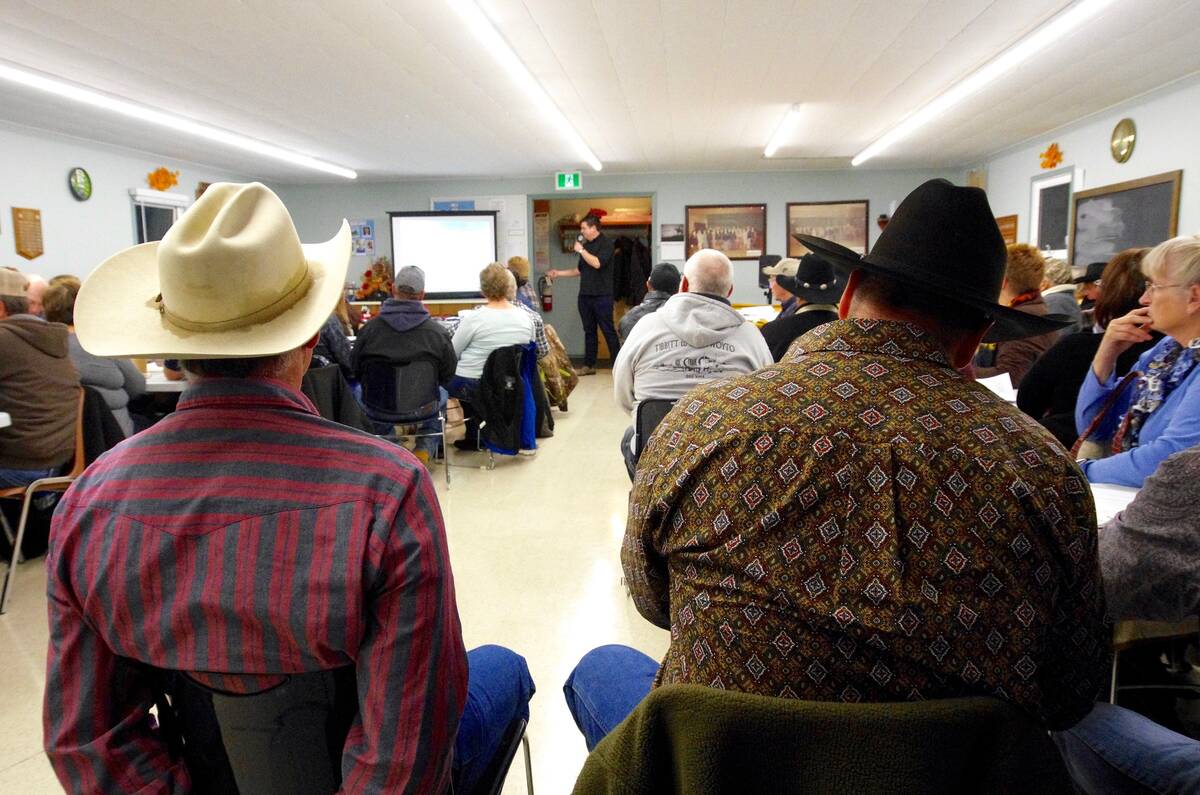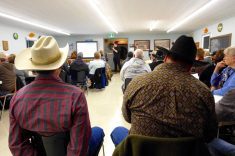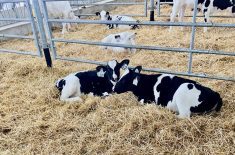Purebred producers diligently weigh their calves to give the purebred bull purchasers an accurate prediction, adding that information to data on bull selection and calving ease.
It is highly heritable, so birthweight and birthweight EPDs, as well as calving ease, are usually listed in bull sale catalogues.
Purebred and commercial products need to be aware of several points surrounding birthweight. A wider discussion may even, one day, lead to standardization.
Read Also

Don’t blow off that beef producer meeting
Local veterinarians and livestock experts often speak at beef producer group events. They have good advice for the farmer on vaccines, calving, beef herd management and more.
The method to determine birthweight, believe it or not, varies greatly across the purebred sector. No one uses government-issued scales so an accurate weight depends on the method.
Old-style slings with spring scales can stretch with time, giving a falsely higher weight. They have fallen in disfavour because they are labour intensive. They may also contaminate the navel area, leading to an increase in navel infections. Many people cut the middle from the sling to avoid these infections and some have rigged winches on the back of quads to hoist the sling.
Others use walk-on scales that are checked for accuracy or have carts with load cells and a display of weight. A few producers who calve on open range use weight tapes around the coronary band (hoof skin interface). This was designed as a way to predict calf birthweight size if a calving problem occurs.
The hoof tapes generally overestimate small calves and underestimate large ones. They are a guide but I think its best if purebred producers describe how they measure birthweight.
I think many commercial producers get a false sense of actual birthweights. And remember, the bull is only half of the equation.
I have seen calving issues creep up because the most robust beef-producing heifers are selected because of high birthweights. It’s not surprising that their calves will have higher birthweights almost regardless of what bull was used.
Shape or phenotype of both the bull and female can also factor into the whole birthweight and calving ease scenario. Some calves have the same weight spread over a longer stretchy frame. Others have the same weight in a short blocky body. This is where phenotype and calving ease EPDs really make sense.
Generally speaking, larger cattle have a larger pelvic size but you can select for larger pelvic size in moderate-sized cattle. True pelvic measuring isn’t done a lot anymore but if heifers are palpated for breeding soundness, have your veterinarian estimate pelvic size by opening their hand internally. Heifers with a super small pelvis are easy to pick out.
As well, calves weighed right at birth will be heavier than at one day of age. Even though calves will have sucked a few times, meconium has been expelled, fluids have dried and the energy to live and run the immune system starts mobilizing a bit of baby fat. This can add up to a couple of pounds.
Inducing cows early essentially shortens gestation, so birthweight will be lower. In-vitro fertilization can result in longer gestations and higher birthweights. With IVF calves, a footnote provides a better idea for buyers of what the natural breeding of these genetics will do on average.
We also know some bulls sire calves with low birthweight because they have a short gestation. This is good to know because you may start breeding these bulls slightly later to avoid surprises. You should also find out if their female offspring have a propensity to have twins or triplets.
Catalogues should have a range in birthweights, because that is normal in any herd and when a catalogue has birthweights in multiples of five pounds (such as 75, 80, 85 or 90), I am suspicious that the weights are estimated. In fairness, I have not seen that for many years.
There is no doubt that slightly lower birthweights have greatly enhanced calving ease over the last 30 years. We need to keep fine-tuning so we are as accurate as possible at measuring birthweight of both bull and heifer calves.
If you ever run into birthweight issues (especially in a multiple sire mating parentage), test a few calves so we can identify the culprit bull and either cull him or put him with more appropriate cows.
In the U.S., they may have adjusted birthweights for calves from heifers or older cows. I like to think birthweight is birthweight. Write it down and be transparent about how that value was derived. Remember to ask about IVF calves and communicate with the breeder on the meaning of their birthweights.
Your best source of information comes from having a good open relationship with the purebred breeder. Their reputation is on the line and they want to do what’s best for your herd. Everyone benefits in the end.
















